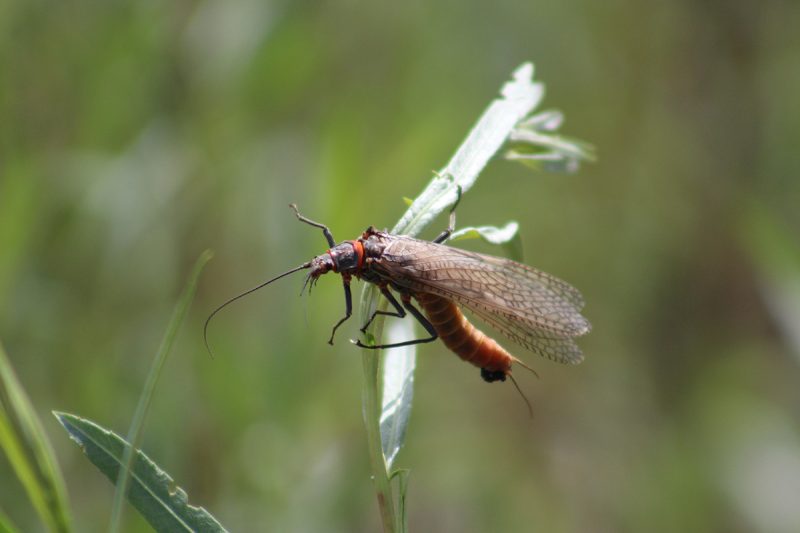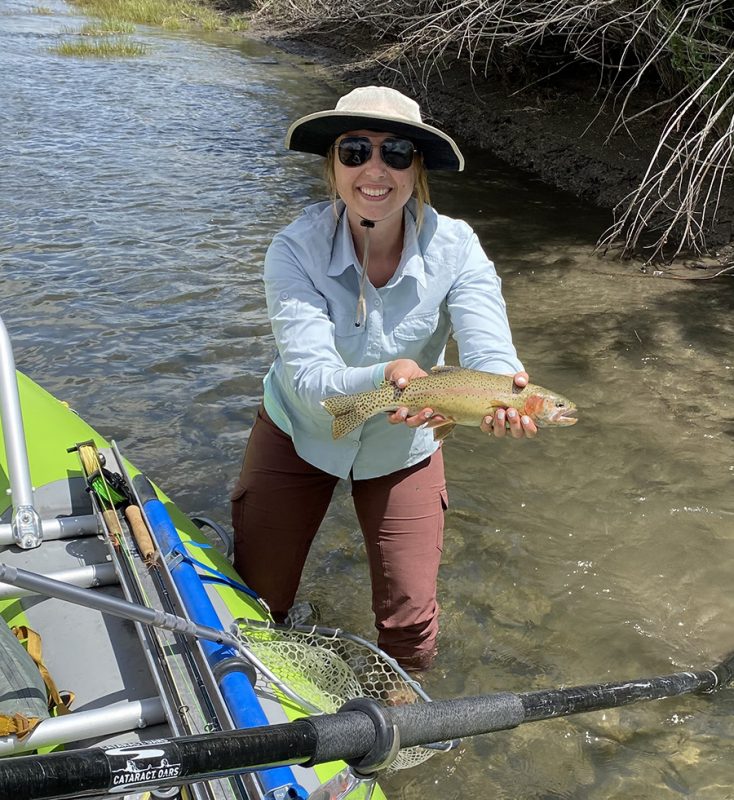Trial and Error, Error, Error
Posted on October 23, 2021Fly fishing in Montana is a year-round activity. Sun, rain, or snow, you can always catch folks throwing a line. In fact, I’ve caught some of my best fish in a blizzard.
Fly fishing in Montana is a year-round activity. Sun, rain, or snow, you can always catch folks throwing a line. In fact, I’ve caught some of my best fish in a blizzard. As summer arrives and the waters warm, fly fishers from around the world wait for the annual salmonfly hatch. This insect hatch is the Super Bowl, the World Cup, and the Great British Bake Off of the fly fishing world. It’s a phenomenon that only lasts a few weeks, but it means the prospect of big trout smacking your fly with exhilarating fervor.
It’s a glorious day on the Yellowstone River. Geoff, my boyfriend and built-in guide, and I unload the boat from the trailer and ready for our launch into the river. Along the shore is a grove of willow shrubs. As we get closer, it becomes apparent that the limbs are coated in the vestiges of salmonfly exoskeletons and teaming with bugs. Geoff scoops one up in his hand and shows it to me. My first reaction is a curt “Ew,” but that quickly fades as he throws it into the river, and WHOMP. A fish chomps down with motivating satisfaction. Excitement builds as we rig up our lines with the forged salmonfly Geoff tied up the night before.

An adult stage salmonfly clings to a willow along the shore.
As the wind picks up, bugs are knocked from the willow-lined bank and slurped up by eager fish. To attract the trout, I have to place the fly a few inches off the bank. If I don’t pay attention to my cast, I’ll land beyond the reaches of fish or even worse, hook a plant and lose my precious fly.
It’s a tricky cast, but within a few minutes, I’ve calibrated to the demands of the day, the weight of the fly, and the wind. It’s a metronomic movement – rearing my right arm above my head, pinching and pulling the line between my thumb and index finger on my left hand. Pausing at the top to feel the full extension of the line behind me. Escorting the fly forward, leading with my elbow. Simultaneously snapping my wrist down and releasing my index finger at the bottom of the arc so the momentum will pull the line through the guides, landing the fly with a miraculous thwomp. My fishing rod is not a tool – it’s an appendage. An intuitive and balanced extension of my brain, muscle, vision, and touch.
The challenge is to determine how the fish are eating today. I cast ahead of the boat and let the current carry us to the fly. I mend my line, flicking my wrist over to the right to mimic the natural movement of a bug. I let it float for as long as possible, patiently presenting the ruse. I try this tactic for a while, creating, revising, and removing structure in the hope a fish will surface. It’s a process of “trial and error, error, error.” (Meadows, 180)
We pull off the river onto a rocky shore. Baked onto the rocks and clinging to leaves are the ghostly, molted shells of salmonfly nymphs. The remnants are split down the middle, signaling the beginning of a mature stage of life. I catch a few and watch their wings unfurl and harden. The bank is spotted with thick shrubs and the cacophony of the hatch is on full display. Hundreds of bugs are nestled between the leaves, grasping with their legs and twisting their abdomen around to stabilize themselves. The wind picks up and the sky is filled with insects. Their first flights are chaotic and haphazard, and I am thankful to be wearing long sleeves, a hat, and sunglasses.
After observing the reckless movement of salmonflies, I experiment with a few other fishing techniques as we take off down the river. It’s a process of constantly responding to the feedback of the fish, or the lack thereof. I change the delay in which I pull in line with my fingers – stripping the line in different frequencies to mimic a bug skirting along the water, creating my own fishing morse code:
Dot, dot, dash.

Dash, dash, dot.

Dash, dot, dash, dot.

I see the snout of a fish break the surface. Adrenaline mainlines from my heart through the tip of my rod. At this moment, I hold calmness and anticipation in tandem. Breathe.
Wait– just a beat more. Don’t react too soon. The fish needs to get its mouth around the fly.
Muscle memory takes hold as I see the trout lock on to the fly. I simultaneously pull the line towards my body and swiftly raise the rod like I’m beckoning to an orchestra. My arm continues to lift, and my rod bows as the intoxicating weight of a fish emerges at end of my line.

A Yellowstone cutthroat trout caught during the salmonfly hatch.
Sources:
Meadows, D. H., & Wright, D. (2015). Thinking in systems: A Primer. Chelsea Green Publishing.
Written by A.P.